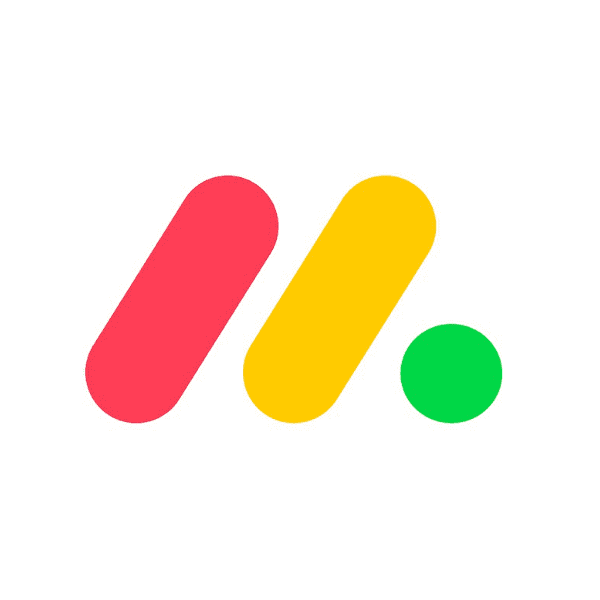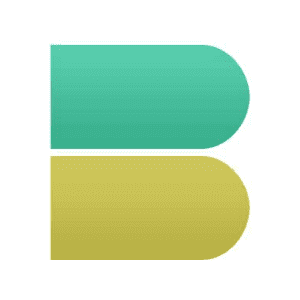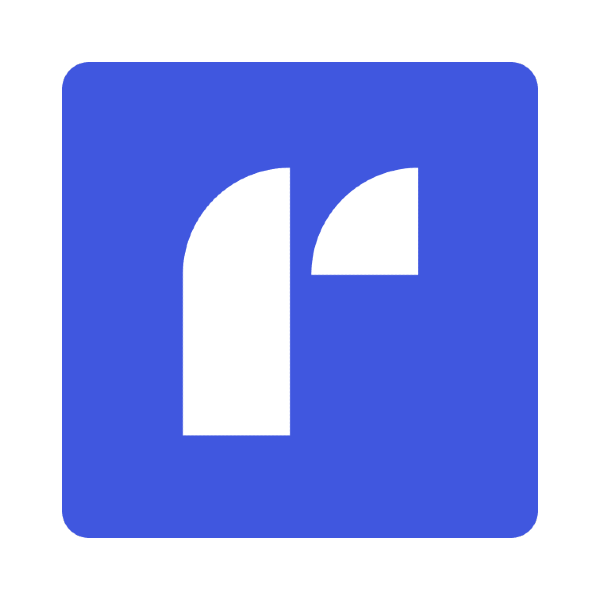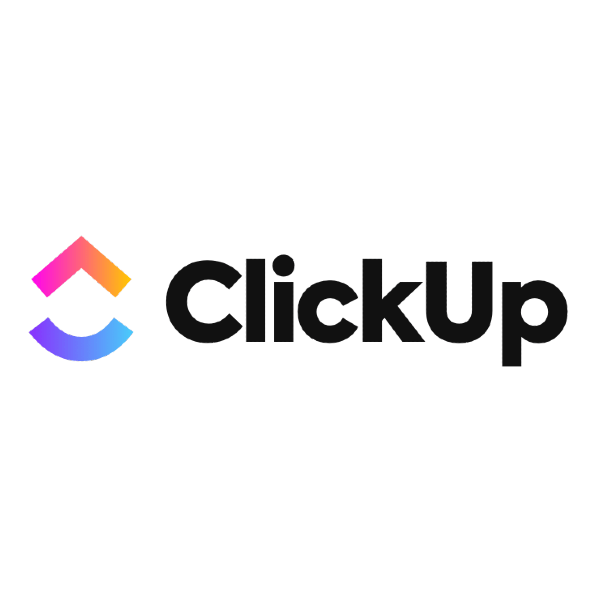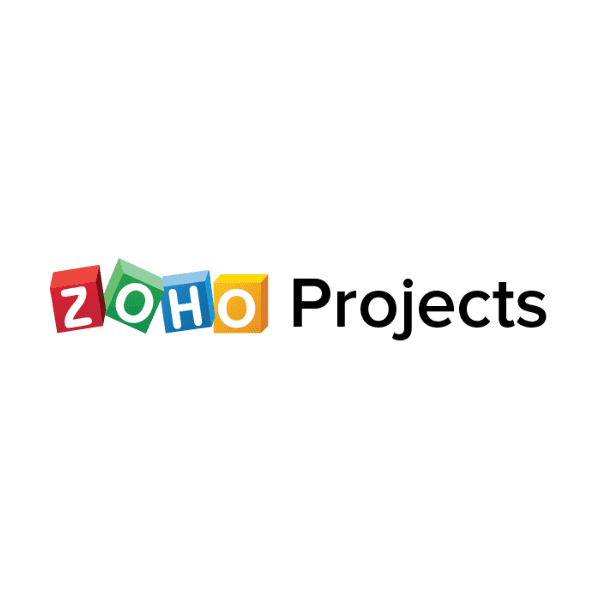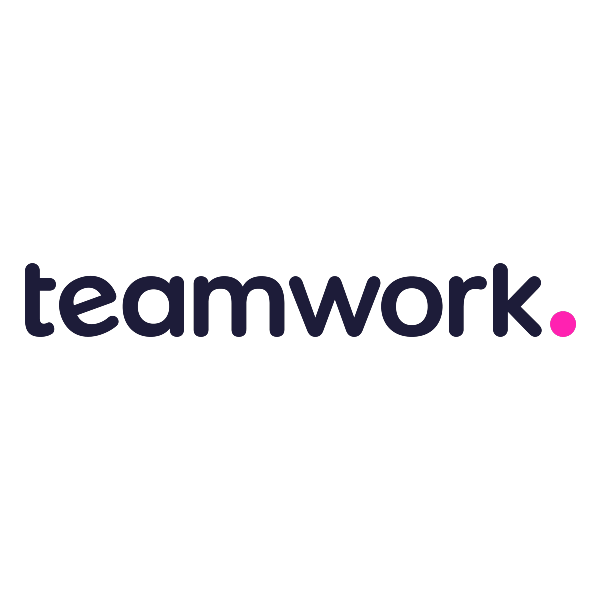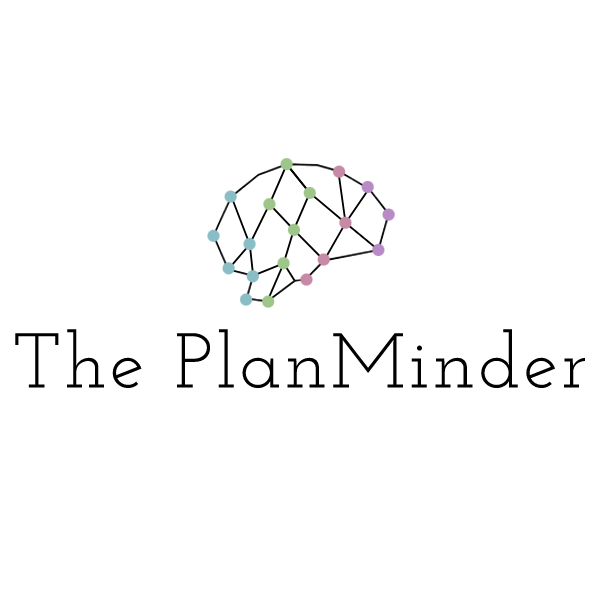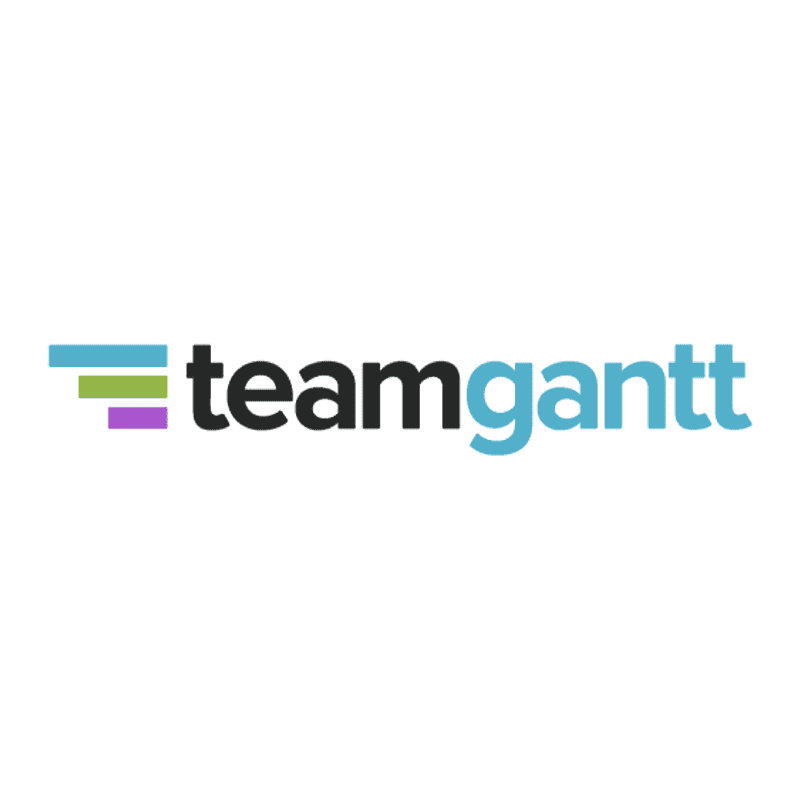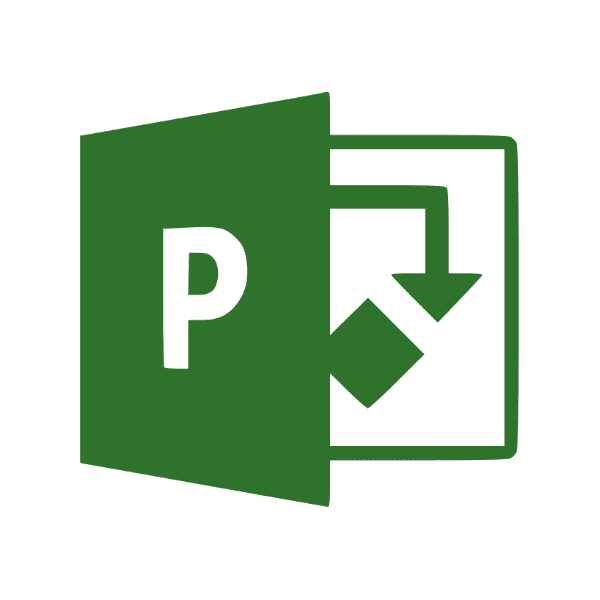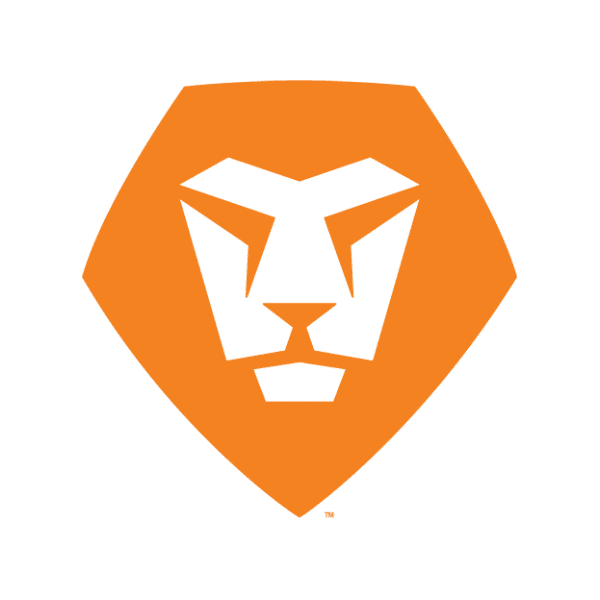Easy to Use Task Project Management Schedulingsoftware
The Best Project Scheduling Software
Here are the top 15 project scheduling tools I've included in this review:
-

monday.com
Best for ready-made templates
-

Kantata
Best project scheduling tool for workflow automation
-

Resource Management by Smartsheet
Best for matching resources and team members to specific projects
-

Hub Planner
Best for medium and large enterprises
-

Runn
Best project scheduling tool for growing IT and software teams
-

Celoxis
Best for complex project scheduling
-

Resource Guru
Best project scheduling software for optimizing resource utilization
-

ClickUp
Best for DPMs looking for one tool to centralize their project scheduling.
-

Zoho Projects
Best all-in-one project scheduling platform
-

Teamwork
Best for team workload management
-

The PlanMinder
Best for automatic schedule generation based on your project data
-

TeamGantt
Best project scheduling tool for beginners
-

MS Projects
Best project scheduling software for general users
-

Workfront
Best for robust feature set
-

Below, you'll find overviews of each tool, along with screenshots, feature overview, and pricing.
Managing your team and resources without a project scheduling software can be a nightmare for any project manager. Your job as project manager is to ensure everything runs smoothly—from putting a team together, allocating resources, running meetings, budget planning, and forecasting.
Since so many tasks are repeated continuously over hours or days, it makes sense to automate these time-consuming tasks. And this is why knowing how to choose the right project management tools can save you loads of valuable time. It's especially critical if you're working on a big project and have a huge team of professionals to manage.
Here, we help you evaluate the best project scheduling software out there—we dig deep to help you find a good fit for your organization and projects, spelling out how the tool is designed to work and how its features differ from other tools on the market.
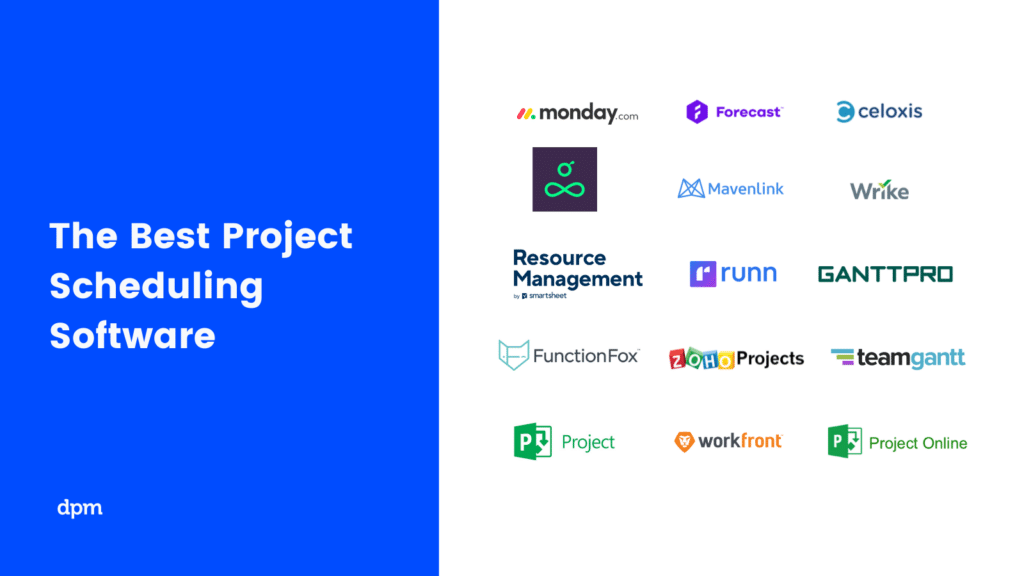
The Digital Project Manager is reader-supported. We may earn a commission when you click through links on our site — learn more about how we aim to stay transparent.
The Best Tools For Project Scheduling
monday.com is a scheduling tool with intuitive collaboration features that's easy to learn and quickly understand. It's a highly customizable tool that helps you clarify the sequence of work and see the progress and status of your projects at a glance.
Most of the project scheduling features in monday.com are in the "timelines" feature—this is where you can plan projects, set deadlines, assign team members, break down tasks, and set dependencies. You can reassign tasks by simply clicking and dragging, and you can view your timelines as spreadsheets, as lists, on a map, on a Kanban board, and other views.
monday.com offers the ability to create summary charts as well as export and share project plans in a variety of formats (XML, PDF, etc). Apart from that, monday.com enables big picture views using reporting dashboards that collect data from multiple boards, allowing better progress tracking.
All said and done, monday.com technically doesn't enable you to make Gantt charts in the very traditional sense (nor can you import or export MPP files). However, it's a flexible, intuitive schedule management software tool that helps you see where tasks are bottlenecking, understand who's currently working on what, etc. What's more, the customizable fields and the drag-and-drop functionality makes it easy to quickly set up and start using.
monday.com's integrates with apps like Slack, Excel, Google Drive, Gmail, Google Calendar, Jira, GitHub, Trello, Dropbox, Typeform, and others, accessible via Zapier.
monday.com costs from $6/user/month and comes with a free 14-day trial. They offer a free plan for up to 2 users.
Pros
- Colorful, graphically pleasant schedule interface
- Easy to use calendar and task scheduling
- Resource scheduling tools included
Cons
- UI navigation can lag
- Complicated pricing structure
Kantata is a well-rounded tool with modules for project scheduling and management, accounting, resource management, business intelligence, and team collaboration—all in one. On top of this, it offers a system of dashboards, live time and expense tracking features, and a great document management system. All of these best-in-class features are delivered through straightforward and minimalistic design.
For project scheduling specifically, Kantata offers a complete set of useful features. As you make detailed project plans, the tool support a multi-level work breakdown structure that lets you define the project by a series of granular tasks and subtasks. Other scheduling features include: Gantt chart-based project plan capabilities, schedule management, multi-level WBS, workflow planning, task assignment and scheduling, and critical path and variance analysis.
Kantata is really much more than a project plan software, as it offers some resource management features (real-time utilization, resource forecasting, capacity management), analytics (built-in reports, custom reporting, trend analysis) and accounting tools (project costing, budget management, invoicing). It also has some good contextual collaboration features to communicate around tasks, projects, and many other project objects. It's a full suite that takes time to truly master, but the simple, streamlined UI shortens the learning curve significantly.
Kantata takes a unique approach to integrations. As part of their "API-first strategy", they've built a solution that doesn't require a third party in order to integrate with any apps. They provide an integration platform (called M-Bridge) that's designed to simplify integration between Kantata and other business apps like CRM, HCM, and financial software. On top of the M-Bridge platform, Kantata provides several pre-built integrations with these tools: Expensify, G Suite, Xero, Salesforce, Netsuite, Jira, Hubspot, Slack, Concur, Dynamics 365, Qualtrics, Quickbooks, and Sage Intacct.
Kantata offers plans to meet your needs. Choose from resource management to complete PSA with advanced BI. To receive accurate pricing information, contact Kantata directly.
Pros
- Aesthetic, simplistic calendaring
- Various scheduling data views
- Drag-and-drop Gantt chart timeline
- Improved task tracking since older versions of the software
Cons
- Lack of global search function
- No schedule sharing without log-in
Resource Management by Smartsheet, a high-level resource management and scheduling software, helps modern teams make confident decisions about project planning, team capacity, budget forecasting, team utilization, and hiring needs in real time.
Built-in timesheets, mobile time tracking, and expense tracking, enables you to create rich project reports by filtering project data with just a few clicks. Reports can give insight into historical data or offer a forecasted view of team utilization, actual vs. planned time reports, budget tracking, expense reports, and projects in the pipeline.
Over 1,000 of the most innovative companies in the world rely on Resource Management by Smartsheet, from 10-person shops and 100-person teams within global brands to 1,000+ person professional services firms. Resource Management by Smartsheet has been recognized for its design excellence with awards from FastCo, SXSW, IxDA + IDSA.
Resource Management by Smartsheet easily integrates with a variety of internal workflows and software suites. Additionally, it provides a flexible API and Zapier integration that can connect with top operational tools for analytics, communications, PM, ERP, and finance.
With a unique project and resource matching feature, Resource Management by Smartsheet helps match team members to the project's requirements according to different criteria like disciplines, skills, availability, and more.
Pros
- Combines time tracking and resourcing
- Able to forecast resource utilization
- Skills database helps resource allocation
- Intuitive for keeping timesheets and assigning hours
Cons
- Initial resource set-up takes time
- Could use better data visualization
- Bulk project edits don't apply to resource field
Hub Planner is a resource management software with a full suite of project scheduling, time entry, and reporting features. The core feature is the simple and usable Scheduler, which allows for project and resource planning and visualization. Users can drag and drop to plan projects and schedule resources. The tool also offers a multi function menu, powerful filtering, and a dynamic team capacity bar. Multiple view modes allow for both high-level birds-eye views and granular views of projects.
Hub Planner has a powerful reporting engine with 70+ pre-formatted templates. If you can't find what you're looking for in a template, you can create reports from scratch.
Hub Planner also has a number of inline workflows for timesheets, requesting vacation time, and a slick resource requesting & approval option. Their Unassigned Work feature is great for scheduling and forecasting ahead of the pipeline, and users can create custom fields at the resource or project level. Users can also customize schedule notifications and reminders.
They've taken a modular approach so you have the option to add or remove extensions to the base product, allowing teams to increase functionality or turn off bits they don't need. Inline integrations with Basecamp, Slack, iCal, REst API, and Zapier are available.
Hub Planner offers a pretty extensive 60 days free trial with everything included. There is an extensive knowledge base with tutorial videos, and their customer support is excellent.
Licenses begin at $7 per month, per resource with annual discounts available.
Pros
- Filter planning & forecasting data by project, resource, group or skill set
- Easily track several projects and generate reports
- Good overview of staff task/time allocations and availability
Cons
- Need to click into modal for more details on events/projects bookings
- To customize views and schedule layout you need to edit settings
- Would be nice to view more project booking information like custom fields in iCal
Runn is a real-time project scheduling and resource planning tool with integrated time tracking and powerful forecasting capabilities. Get a bird's-eye view of all projects and people to stay on top of your business. Collaborate with co-workers to remain up-to-date and on the same page with remote teams.
Scheduling is easy and intuitive in Runn–simply drag-and-drop to create project phases and allocations. Create project milestones, project notes and add project budgets. Flick between monthly, quarterly and half-yearly views to plan for the short and long term. If you don't have the right person at the right time, use placeholders to define the requirements for the project.
Runn makes planning dynamic and visual. Watch the charts and reports update as you plan your projects. You can see visualisations of capacity, workload, availability, and billable and non-billable utilisation. Plan out tentative projects to see how your resourcing plans might change if the work gets confirmed.
Track projects, view forecasts, and get relevant metrics within Runn. You'll have up-to-date data in one place to keep tabs on insights like utilization, project variance, and overall financial performance. Use Runn's built-in timesheets to understand how much time was worked on your projects compared to what was planned.
Runn integrates with Harvest, WorkflowMax, and Clockify for importing project, client, and people data and syncing time entries. With Runn's API, you can build your own integration to send data across your favorite tools.
Try Runn free for 14 days, no credit card required. Runn has three pricing plans: Free for Startup (5 or fewer people), $10 per person for Pro, and custom pricing for Enterprise. There is also a 20% discount on annual plans.
Pros
- Clean UI that's easy to use & navigate
- Free version available for 5 users
- Native integrations & API available
Cons
- No time tracking built in
- Cant keep notes on projects
- Colors are not customisable
When it comes to project scheduling, Celoxis comes packed with powerful planning and scheduling tools to help you build dynamic project plans that automatically adjust to changing real-world conditions. Armed with one of the most flexible, fast, and responsive interactive Gantt charts, Celoxis can effortlessly handle large project plans involving multiple levels of sub-tasks, inter-project dependencies and even multiple resources per task.
Its automatic scheduling feature accommodates almost every real-world scenario to provide a robust and reliable project schedule. With features like automatic email alerts, RAG health indicators, and critical path analysis, Celoxis makes project tracking a breeze. Celoxis provides visibility into what every member is doing and gives you the ability to track resource loads in real-time. With built-in team and client collaboration features, one can effortlessly share files, discuss, and exchange comments not just with other team members but also with your clients. Several best-practice and custom reports including drill-down charts that let you gather 360-degree real-time insights around your projects and resources.
Celoxis integrates out-of-the-box with popular apps likes Google Drive, Excel, MS Project, Jira, Salesforce, and Quickbooks Online. It is also fully integrated with Zapier, which allows you to use sync with thousands of apps. It also has an easy-to-use web-based API to connect with other services and legacy business apps.
Celoxis is one of the few tools that offer SaaS and On-Premise deployment options. Celoxis costs $25/user/month with additional commitment discounts.
Pros
- Pre-built project matrix report
- Has resource management and loading
- Supports advanced predecessor conditions
- Great value for small teams
Cons
- Heavy, complex interface
- Clients cannot be assigned tasks
Resource Guru is a dedicated resource scheduling software tool. The tool allows team members to visualize tasks on calendars, shows what everyone is working on, and clearly displays availability so project managers can maximize utilization. Project managers can make resource bookings simultaneously while ensuring they aren't overbooking resources.
Resource and project clashes are automatically prevented. Bookings can be added to a waiting list and used for capacity planning later. Each staff member gets their own resource dashboard so they can log in and know exactly what they should be working on. Powerful reporting features allow users to monitor utilization and business performance, as well as help with capacity planning.
Resource Guru costs from $2.50/user/month.
Pros
- Availability bar feature for capacity planning
- Clash management capabilities to prevent overbooking
- Powerful resource filters
Cons
- Integrations are mainly via Zapier, rather than as native integrations
- No copy-paste of resource tasks
ClickUp works as a scheduling software thanks to its many templates, features, and colorful project spaces. Gantt is the traditional view for task management and seeing the project schedule. Resource management features like workload or time tracking will help you optimize resource utilization. Finally, meeting templates complement your scheduling by giving you a place where you can keep track of your interactions with the team.
The best part of this last item is that ClickUp can be integrated with apps like Google Calendar. Therefore, you can sync your calendar with ClickUp and let the platform automatically create tasks for you when an update occurs on the Google side of things, and vice versa. No more jumping between apps!
Note: Calendar integration also works with Apple's Calendar and Outlook.
ClickUp offers native integrations with Slack, G Suite, Dropbox, and many more tools, as well as over 1,000+ integrations through Zapier.
ClickUp is free with limited storage for an unlimited number of users. Paid plans start at $5/user/month and offer a free-trial.
PROS: Calendar synchronization with popular apps, Centralized control over scheduling, Affordable plans for small businesses, Workload view available in free version CONS: Hyper-customization can be challenging for beginners
Zoho Projects is an award-winning project management and project scheduling tool from Zoho. It offers flexibility and customizations to suit the needs of traditional project managers as well as agile teams.
Plan and track the way you like – as lists, kanban, or visually with Gantt charts. With task tags and custom views and filters, organize your tasks and find them with ease. In addition to timeline planning, plan your resources effectively with the drag and drop resource utilization module. Keep everyone in the loop right inside Projects via inbuilt chat, forums, and comments, or take the social route with the project portal feed. Add to that the integrated advanced analytics capabilities to generate more than 50 types of charts and reports. The colorful dashboards are fully customizable so that users can make Zoho Projects their own.
The interface and modules are highly customizable. All aspects of the UI from theme colors to arrangement and visibility of the various modules can be changed to suit a user's preferences. Zoho projects also offer free onboarding for customers and a comprehensive online help guide for all users.
Zoho Projects stands out in cases where there are multiple hand-offs involved. It is especially popular among IT companies, consultants, and education organizations. The tool is trusted by over three million users and hundreds of big brands across the globe.
Being part of Zoho's ecosystem allows Projects to connect to several of Zoho's own services such as Zoho Books, Zoho CRM, and Zoho's finance suite. The new Zoho marketplace allows 3rd party integrations as well.
Starts from $4/user/month billed annually. Also has a freemium version of up to 3 users for 2 projects and a 10-day free trial. No credit card information is required.
Pros
- Unlimited number of projects
- Easy workflow automation
- Robust communication features
- Time-track multiple tasks at once
Cons
- Does not integrate with Quickbooks
- Lacks some reporting features
- Lacks some file type export options
Teamwork is a work and project management software that helps in-house teams and agencies improve collaboration, visibility, accountability, and results. It is a flexible project management solution that helps you to schedule projects and manage the entire project lifecycle from start to finish.
Teamwork includes features that help you structure your projects and milestones: create task lists, tasks, and subtasks to break down the work into action items for your team. You can add due dates, priority, description, supporting documents, or tags to help mark up your tasks with useful information and track deadlines. Team members can track time on tasks, so project managers can analyze time spent.
There's also a useful "Workload" feature that provides a big picture of your team's capacity. The collaboration features in this project management software are great—collaborate and communicate with clients and/or your internal team with comments on tasks.
Overall, Teamwork is an intuitive and highly customizable tool. It has a lot of features, so it does come with a learning curve to get up to speed. However this is made much easier with ongoing webinars, access to help docs, an online resource center, and a dedicated customer support team.
Teamwork integrates easily with other tools including Gmail, Harvest, HubSpot, QuickBooks, Slack, Dropbox, and more.
Teamwork costs from $10/user/month. They also offer a 30-day free trial.
Pros
- Features can be turned on/off (tasks, messages, time, risks, billing)
- Easy zoom in/zoom out on project plans
- Easy to communicate task status with clients or team
Cons
- No CSS template option for advanced customizability
- No industry-specialized project templates or formats
- No way to measure your team's capacity
The PlanMinder is a project planning tool focused on automatic scheduling and uncertainty analysis. Automatic feedback from time reports give you plans that are always up to date. The PlanMinder is built for multidisciplinary teams with shared resources, where estimates are uncertain and priorities and scope may change.
The PlanMinder lets you create and view project plans separate from the schedule view. On the scheduled timeline you can tweak and optimize plans for best overall resource utilization or reduced risk, and immediately see the effect. Changing project priorities is a simple drag and drop operation.
Time estimates are entered with uncertainty, and this information is used to calculate the accumulated uncertainty of all scheduled projects. You can track how the probability of reaching a deadline in time changes as the project progresses, and prepare efficient contingency measures in good time.
Reporting tools let you investigate both the past and the planned future for projects. Calculated costs include uncertainty so that you know the risk of breaking a budget. Data can be exported to excel, or accessed directly from the database.
The software is easy to use with a fully-featured windows client, and a simplified web-based user interface for mobile devices. The home screen gives you an overview of the newest and most urgent information you need to address.
The PlanMinder costs from $10/user/month and offers a 60-day free trial.
Pros
- Plans are consistently kept up to date
- Helps you make better decision with risk and uncertainty information
- Time reporting with options to fit all preferences
- Empowers your team with transparent information and automatically updated plans that handle deviations
Cons
- Self-hosted database
- No built-in chat
- No document handling
Used by Amazon and Netflix, TeamGantt is a project management tool with a freemium version for smaller groups and teams who don't yet need an upgrade to a paid plan. Obviously, TeamGantt specializes in Gantt charts and other task planning but they also track workloads and team availability, collaboration features like chat and tagging, and customizable alerts.
Project managers should be aware that TeamGantt works best for simple projects but the software struggles to handle more complex projects across multiple teams. For example, it is not easy to gauge project status at a quick glance.
TeamGantt scores well in the Usability segment of the evaluation criteria, as it is incredibly flexible to use. The tool is accommodating to however you may want to set up and track your projects, no matter their structure or constraints. Additionally, providing an easy "read-only" URL makes it great for sharing with outside parties for input.
TeamGantt costs from $24.95/month and has a freemium version of the software for up to 3 users.
Pros
- Progress bars for schedule tracking
- Easily share schedule progress with public URL
- View timelines and task lists for multiple projects
- Schedule multiple people to any task
Cons
- Unable to add many dependencies
- No early/late start & finish options
Microsoft Projects can be purchased with Office 365 or as a stand-alone item; any team already accustomed to Microsoft programs' interfaces will find that learning this software is straightforward. If you're not using the MS ecosystem, I'd suggest checking out some MS Project alternatives. Top features include start date restraint rules and visualization in a grid, board, or timeline.
Microsoft Projects has the honed functionality of an Excel doc with scheduling-specific tools for project management pros. If you need project scheduling help, try their intuitive and robust Gantt chart generator to navigate product timelines.
Integrations include other Microsoft software, like Outlook, Excel, Skype, and more.
One critique to note is that MS Projects, like any Microsoft software, tend to be a bit of a memory and CPU hog. Thus, they lost a few points in Usability, as it may limit the performance of your computing machine if it's not up to snuff.
MS Projects starts at $7/user/month and has a free 30-day trial.
Pros
- Plan and schedule multiple projects at once
- Simple planning and scheduling tools with Microsoft UI
- Good at allocating and scheduling resources
- Project schedule accommodate changes automatically
Cons
- Can't easily rename schedule column headings
- Changing dates always defaults to project start date
- Visuals not very customizable
If you are looking for a complete project management solution, Workfront is your go-to software. It has everything from file sharing, customizable reports, workflow automation, resource management, capacity planning, and collaboration tools. It also features a help-desk and issues tracking tool which can help to identify any potential problems and solve them. It's a more complete project and portfolio management solution, with a higher price tag. One of the strongest points of this tool is its ability to sync all of your other business apps.
It has an impressive project scheduling tool that can create tasks, milestones, predecessors, and allocate resources while monitoring progress within set time-frames. It is a great collaboration tool where team members stay in sync through threaded conversations, status updates, and comments. They can even assign milestones to each other and get live notifications of any changes taking place. For reporting, Workfront offers 50 report templates to analyze and share the status of your project. You can even create your own dashboard and combine multiple reports into one.
Workfront integrates with out-of-the-box apps likes Dropbox, Google Docs, SharePoint, Jira, Jive, AEM, and Salesforce. They also have an integration platform called Workfront Fusion that's specifically designed to connect 100s of business apps, syncing tools like Airtable, Amazon SNS, Asana, Atlassian Confluence, Google Analytics, Mailchimp, Mavenlink, Oracle, Netsuite, Quickbooks, and dozens more.
Workfront costs from $30/user/month.
Pros
- Quantify and evaluate creative work
- Multiple time-logging options
- Clear request vs assignment handling
- Thorough documentation
Cons
- More complex navigation
- Tasks can only be marked at 0 or %100 completion
- Easy-to-miss conversation/comment placement
Learning how to use Microsoft Project scheduling software (Microsoft Project Online) can prove to be difficult for some because it is a huge program which requires experience to master. It's available as a desktop app with an Office 365 subscription in order to use it. You can use any MS viewer software to view the MPP files even if you do not have the Microsoft Project license.
Microsoft scheduling software is used by many multi-million dollar companies. Despite the fact that it's a legacy project management software (or maybe because of it), many new project managers and mid-sized agencies prefer Microsoft project alternatives because MS project files are usually very big and cannot always be shared easily online.
MS Project Online allows you to work remotely from anywhere by collaborating with your team members and stakeholders. It is useful for managing projects, planning budgets, allocating resources with Gantt charts, and creating diagrams to visualize project data. You can use colors to highlight critical data and keep track of the progress so you don't miss any deadlines.
MS Project Online integrates with other Microsoft Office products—but keep in mind that it only works only on Windows platforms.
Microsoft Project Online costs from $7/user/month.
Pros
- Can generate a Gantt chart from a spreadsheet
- Helpful project template descriptions for guidance
- Driver prioritization module for ranking strategies/objectives
- Easy integration with other Microsoft software
Cons
- Limitations on collaboration tools
- Steep learning curve
- Few customization options
Need expert help selecting the right Project Scheduling Software?
We've joined up with the software comparison platform Crozdesk.com to assist you in finding the right software. Crozdesk's Project Scheduling Software advisors can create a personalized shortlist of software solutions with unbiased recommendations to help you identify the solutions that best suit your business's needs. Through our partnership you get free access to their bespoke software selection advice, removing both time and hassle from the research process.
It only takes a minute to submit your requirements and they will give you a quick call at no cost or commitment. Based on your needs you'll receive customized software shortlists listing the best-fitting solutions from their team of software advisors (via phone or email). They can even connect you with your selected vendor choices along with community negotiated discounts. To get started, please complete the form below:
Best Project Scheduling Software Summary Chart
We go into detail about the pros & cons and main features of each project software scheduling tool based on our criteria. Here, the info is summarized in a simple chart:
| Tool | Free Option | Price | ||
|---|---|---|---|---|
| 1 | monday.com Best for ready-made templates | 14 days free trial | From $6/user/month | Check out monday.com |
| 2 | Kantata Best project scheduling tool for workflow automation | Not available | From $19/user/month | Check out Kantata |
| 3 | Resource Management by Smartsheet Best for matching resources and team members to specific projects | 30 days free trial | From $25/user/month | Visit Website |
| 4 | Hub Planner Best for medium and large enterprises | 60 days free trial | From $7/user/month | Check out Hub Planner |
| 5 | Runn Best project scheduling tool for growing IT and software teams | Freemium version 14 days free trial | From $10/user/month | Check out Runn |
| 6 | Celoxis Best for complex project scheduling | 30 days free trial | From $25/user/month | Check out Celoxis |
| 7 | Resource Guru Best project scheduling software for optimizing resource utilization | 30 days free trial | From $2.50/user/month | Check out Resource Guru |
| 8 | ClickUp Best for DPMs looking for one tool to centralize their project scheduling. | ClickUp is free with limited storage for an unlimited number of users. | Check out ClickUp | |
| 9 | Zoho Projects Best all-in-one project scheduling platform | Freemium version 10 days free trial. No credit card required | From $4/user/month billed annually. Also has a freemium version up to 3 users for 2 projects | Check out Zoho Projects |
| 10 | Teamwork Best for team workload management | Freemium version 30 days free trial. No credit card required. | From $10/user/month | Check out Teamwork |
| 11 | The PlanMinder Best for automatic schedule generation based on your project data | Freemium version 60 days free trial | From $10/user/month and offers a 60 days free trial. | Check out The PlanMinder |
| 12 | TeamGantt Best project scheduling tool for beginners | Freemium version 14 days free trial | From $24.95/month | Check out TeamGantt |
| 13 | MS Projects Best project scheduling software for general users | 30 days free trial | From $7/user/month | Check out MS Projects |
| 14 | Workfront Best for robust feature set | 30 days free trial | From $30/user/month | Check out Workfront |
| 15 | Microsoft Project Online Best for general users | 30 days free trial | From $7/user/month | Visit Website |
7 Reasons Why You Should Use Project Scheduling Software
Especially if your organization is scaling, project management scheduling tools are a must-have. Here are a few key benefits of project scheduling software:
- Define the project workflow and keep the team focused on the right tasks
- Identify and track your project's critical path to leverage flex in the schedule
- Waste less time rescheduling with priorities & dependencies that automatically adjust
- Set project baselines to track your project plan against your execution
- Free up time and energy by setting up the tool to provide automatic deadline reminders
- Easily visualize, compare, spot holes, and adjust your resource availability
- Generate reports on utilization, organizational demand, and capacity, and review trends to forecast future hiring needs
There are many more benefits—and they will continue to grow in number as technology evolves, providing more opportunities for automating tasks and making smarter decisions.
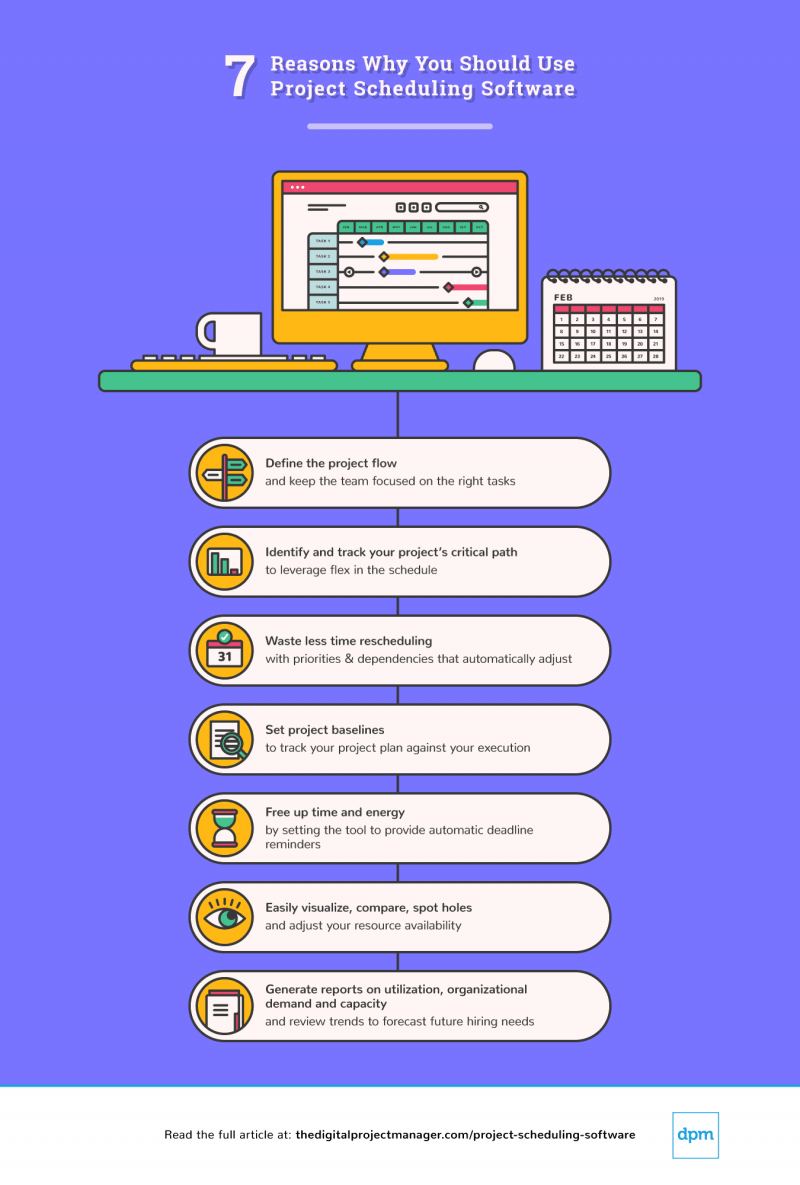
Other Tools You Might Find Useful
There are many project scheduling tools out there and here are a couple of honorable mentions that we haven't included in this review. Check them out!
-
Notion
Best project scheduling tool for small businesses
-
KeyedIn
Best project scheduling software for international enterprises
-
ActiveCollab
Best for project scheduling for small teams
-
ProWorkflow
Best project scheduling software for beginners who want simple UI
Project Scheduling Software FAQ
What Does Project Scheduling Software Do?
Scheduling software helps you not only plan your projects but also get a grip on what's currently happening as the project unfolds. It also allows you to centralize all work-related activities such as planning, task allocation, resource management, and reporting.
Project scheduling tools create transparency as well, not only for stakeholders but also for team members who want to know what's expected of them.
What Is Project Scheduling In Software Project Management?
Project scheduling in project management is part of project planning. It's the process of defining a project's phases, milestones, resources, and workflow, and plotting these key components on a timeline that factors in the dependencies between the different parts.
Throughout the lifecycle of a software project, you refer to the project schedule to understand its critical path and track progress on deliverables and the project as a whole.
When there are changes, a well-made project schedule helps you to factor in the effects of any changes through dependencies laid out initially, providing a visual tool to understand the relationship between different roles, tasks, and phases of a project.
What Are Some Common Project Scheduling Techniques?
Most project scheduling techniques make use of a Gantt chart or similar chart, and they include:
- The Critical Path Method (CPM): a mathematically-based technique where you create a schedule by using your scope to list tasks, their durations, and dependencies
- Program Evaluation and Review Technique (PERT or PERT Analysis): a technique similar to CPM, but you calculate a weighted average duration for tasks based on your confidence level in their timing (optimistic, pessimistic, and most likely duration)
- Fast tracking: a form of Duration Compression where you shorten a project schedule by overlapping tasks that can be done simultaneously
- Crashing: a form of Duration Compression where you get tasks done faster by adding more resources to the project timeline
- Simulation: modeling "what if" scenarios to forecast possible durations of a project
- Resource Leveling: adjusting a schedule so there's as little over- or under-utilization of resources as possible
What Are Some Common Features in Project Scheduling Software?
Project scheduling software shares many typical features with project management software, such as budget planning, work management and task management, calendar views, Gantt charts, and resource allocation modules.
Just realized you're looking for something different? Try these other tools:
Project management software to help you manage projects, files, team communication, and more.
Gantt chart software to quickly and easily create resource plans for your projects.
Criteria for Selecting Project Scheduling Software
No single project scheduling software fits the requirements for all kinds of projects, but below I've taken my general criteria for evaluating software and applied it to project scheduling software. I've used it to score the tools on the list according to what's most important to have in a project scheduling tool.
- User Interface (UI): Are the displays intuitive and clear? For scheduling tools, I also look for drag & drop interfaces that let you quickly move resources around with a single click.
- Usability: Is it easy to learn? Does the tool provide a mobile app? How good are the tutorials and training? Does the company offer good user support?
- Features & Functionality: In these tools, I narrowed in on the most important project scheduling features and functions, explained below.
- Planning & Scheduling: At its most basic level, project scheduling requires some form of project management calendar software. Planning and scheduling features might include calendars, task boards, checklists, cards, task lists, multiple views for seeing daily and monthly workloads, Gantt charts, due dates & timelines, drag & drop resourcing, filters for finding specific project tasks, and time and deadline tracking.
- Communication: A lot of PM software has some kind of communication tool built-in. These include team chat, messaging, integrations with email for automatic notifications, a live activity stream or notifications feed, and task comments.
- Analytics & Reporting: One of the main benefits of project scheduling software is its ability to easily provide loads of project data and compile it into reports. The best project planning software offers analytics and reporting features like configurable reports, real-time and interactive reporting features, automatic report generation, and advanced analytics that track time, resource utilization, costs, and other key project metrics.
- Integrations: At a minimum, most project scheduling software will have pre-built integrations with Google Suite, Dropbox, and Box. Something to watch for is integrations with or the ability to sync with calendar apps—while it may seem like a no-brainer, not all tools have pre-built integrations with calendar apps that you're already using (or you have to upgrade your plan to access that functionality).
- Value for $: How does this tool's price compare to other tools with similar feature sets? A note on price: for small teams with simple project scheduling needs, you might be able to get by with free project scheduling software. Look for the basic, freemium versions offered by tools like Wrike and Asana. For paid versions, most tools fall in the $6-$10 per user range. You'll find a few tools, like Forecast and Celoxis that are over $20 per user and provide a more robust set of tools that expand into portfolio management territory.
What Do You Think?
What do you use to put your project schedules together? Is there a project management tool that you feel does it all, or have you figured out a magic combination of tools that works especially well? Share it with our community of digital project managers below.
Related Read: Resource Loading In Project Management: A Helpful How-To
Related List of Tools: Help Desk Software
Source: https://thedigitalprojectmanager.com/tools/project-scheduling-software/
